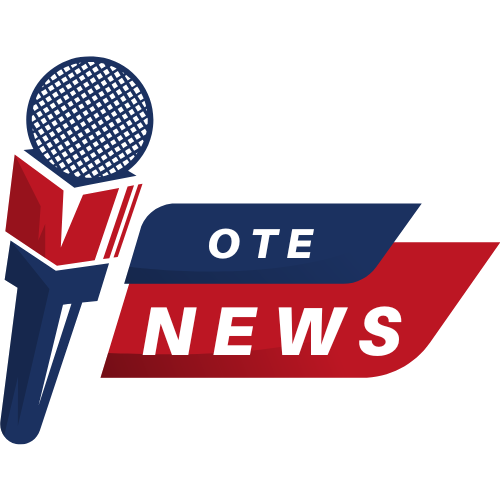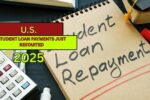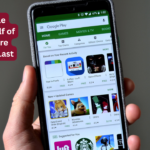You might think only one or two programs exist—and maybe you’ve seen headlines claiming “they don’t work.” But the truth is, there are over 80 programs available, and your chances of qualifying might be better than you expect.
Student loans can open doors to a better future, but they can also become a heavy burden if misused or not carefully planned. Whether you currently hold a student loan or plan to take one out, it’s crucial to know if you qualify for forgiveness.
We estimate that around 50% of student loan borrowers qualify for full or partial loan cancellation through Student Loan Forgiveness. You could become eligible by volunteering, serving in the military, practicing medicine in underserved areas, or meeting other specific requirements.
With so many different forgiveness programs out there, knowing where to start can feel overwhelming. What’s best for you really depends on your personal and financial goals.
This guide pulls together the various paths to student loan forgiveness and repayment assistance, all in one place, to help you tackle your debt more easily.
Repayment Plan-Based Student Loan Forgiveness
Some forgiveness programs are tied directly to your repayment plan. If you’re on an eligible plan, your remaining balance can be forgiven once you complete the full repayment term.
Most borrowers qualify through these lesser-known “secret” routes. The trick? Enroll in a qualifying repayment plan, and once your term ends, the remaining loan balance gets wiped out.
Keep in mind, income-driven repayment plans have specific eligibility criteria. If you pay off the loan before the term ends, you won’t receive any forgiveness.
Also, forgiven amounts under these plans are usually considered taxable income. However, President Biden made all forgiven and discharged loans tax-free at the federal level through December 31, 2025.
You can apply for these repayment plans through your lender or at StudentAid.gov.
Income-Based Repayment (IBR)
The Income-Based Repayment Plan is a go-to option for borrowers facing financial hardship. If your loans originated before July 1, 2014, you’ll pay no more than 15% of your discretionary income, with forgiveness after 25 years.
For loans issued after July 1, 2014, the payment cap drops to 10% of discretionary income, and forgiveness kicks in after just 20 years.
IBR ensures your monthly payment never exceeds what you’d pay under the 10-year standard plan. At the end of your term, your remaining balance is forgiven.
Your “discretionary income” is calculated using your family size and tax returns.
Pay As You Earn (PAYE)
PAYE functions similarly to IBR. You’ll pay no more than 10% of your discretionary income, and your loan balance is forgiven after 20 years.
However, only loans taken out after 2007 and disbursed by October 1, 2011, qualify.
As with IBR, your payments will never exceed the 10-year standard amount, and your balance is forgiven at the end of the plan.
To boost your eligibility, consider filing taxes as “married filing separately” if you’re married.
⚠︎ Currently Paused Due to Court Order
Loan forgiveness under PAYE is paused due to a court injunction. You can still enroll in the plan, but end-of-term forgiveness isn’t being processed right now.
Income-Contingent Repayment (ICR)
ICR is different from IBR and PAYE because it has no initial income requirements. Any eligible borrower can sign up.
You’ll pay the lesser of:
- 20% of your discretionary income, or
- What you’d pay on a 12-year fixed repayment plan, adjusted for income
Your remaining balance is forgiven after 25 years.
But be careful—payments under ICR could be higher than under a 10-year standard plan, especially if your income increases. Since you must recertify income annually, your payments can go up.
⚠︎ Currently Paused Due to Court Order
Forgiveness under ICR is also paused. Borrowers can still join the plan, but forgiveness is not being processed.
Career-Based Student Loan Forgiveness Options
Your career path can also qualify you for forgiveness. One of the most widely used programs is Public Service Loan Forgiveness (PSLF), which offers the highest amount of tax-free forgiveness in the shortest time.
But it’s not the only option tied to your profession.
Public Service Loan Forgiveness (PSLF)
PSLF forgives the remaining balance on qualifying loans after 120 payments (10 years).
This is one of the best routes to loan forgiveness—if you qualify.
The definition of public service is broad. You qualify if you work full-time for:
- Any federal, state, or local government
- A 501(c)(3) tax-exempt nonprofit
- Certain other nonprofits
Your job title doesn’t matter. What matters is who you work for. Here are examples of qualifying roles:
- Government employees (local, state, federal)
- Emergency responders
- Military service members
- Law enforcement officers
- Public health professionals
- Teachers (see forgiveness options for teachers)
- Librarians and school staff
- Public interest lawyers
- Early childhood educators
- Those serving individuals with disabilities or the elderly
Exclusions: Political organizations and labor unions don’t qualify.
To benefit, you must also be on a qualifying repayment plan. Learn more in our Ultimate Guide to PSLF.
Temporary Expanded PSLF (TEPSLF)
TEPSLF is designed for those who had eligible employment and Direct Loans but were enrolled in a non-qualifying repayment plan. Read more about it here.
PSLF Buyback Program
This program lets you “buy back” time spent in forbearance that otherwise would’ve counted toward PSLF. It’s ideal for borrowers in SAVE forbearance or those affected by processing delays.
Attorney Student Loan Forgiveness
Attorneys working at the U.S. Department of Justice may qualify for the Attorney Student Loan Repayment Program (ASLRP). Each year, selected attorneys receive direct payments to their loan holders.
Accepting ASLRP funds means committing to three years of service with the DOJ. It’s a competitive program, and benefits depend on available funding.
Faculty Loan Repayment Program
Offered by the HRSA, this program supports healthcare faculty roles by offering up to $40,000 in loan repayment, plus additional funds to offset tax liabilities.
The goal is to attract and retain future educators in healthcare fields.
Federal Employee Loan Repayment Program
Federal agencies can use this program to recruit or retain talent by repaying student loans.
Key points:
- Up to $10,000 per year
- Up to $60,000 total
- Requires a three-year service agreement
Employees must maintain acceptable performance. If they leave the agency early or are terminated for poor performance or misconduct, they must repay the benefit.
Important: You must enroll in this program when hired—you can’t opt in later.
Indian Health Services Loan Repayment Program
The Indian Health Service (IHS) Loan Repayment Program offers up to $20,000 per year to help repay qualifying student loans. In exchange, you must commit to working full-time for two years at an approved Indian health program site.
John R. Justice Student Loan Repayment Program
The John R. Justice (JRJ) Program helps state public defenders and prosecutors by offering student loan repayment support. To qualify, you must commit to working in your role for at least three years.
This program provides up to $10,000 per calendar year, with a lifetime cap of $60,000 per attorney.
National Health Service Corps
The National Health Service Corps (NHSC) provides tax-free student loan repayment assistance to qualified health care professionals who work in areas with the greatest need.
Through the NHSC Loan Repayment Program (NHSC LRP), licensed primary care, dental, and mental/behavioral health providers can earn up to $50,000 in student loan repayment for a two-year commitment at an NHSC-approved site. You can extend your service for more loan repayment support.
Applicants whose service sites have a Health Professional Shortage Area (HPSA) score between 26 and 14 receive priority. Awards go up to $50,000 until the available funding runs out.
National Institutes of Health (NIH) Loan Forgiveness
The NIH extramural Loan Repayment Programs (LRPs) include:
- Clinical Research LRP
- Pediatric Research LRP
- Contraception & Infertility Research LRP
- Health Disparities Research LRP
- Clinical Research LRP for Individuals from Disadvantaged Backgrounds
Awardees must commit at least 20 hours per week (based on a 40-hour week) for two years to qualifying research funded by a domestic nonprofit or U.S. government entity.
The NIH repays 25% of eligible educational debt per year, with a maximum of $35,000 annually. Repayments are made quarterly as long as service requirements are met.
NURSE Corps Loan Program
The NURSE Corps Repayment Program helps RNs, APRNs, and nurse faculty by covering up to 85% of unpaid nursing education debt.
To qualify, you must:
- Work for two years at an approved Critical Shortage Facility in a high-need area (RNs/APRNs), or
- Teach at an accredited nursing school (nurse faculty).
SEMA Loan Forgiveness Program
The SEMA Loan Forgiveness Program supports individuals starting careers in the automotive industry. To be eligible, you must work for a company that belongs to the Specialty Equipment Market Association (SEMA).
⚠️ Note: The program exists under law, but Congress hasn’t allocated funding.
The program pays $2,000 toward student loans, sent directly to your lender.
Teacher Loan Forgiveness Program
If you teach full-time for five consecutive academic years in a low-income school or educational service agency and meet all requirements, the Teacher Loan Forgiveness Program can forgive up to $17,500 in student loans.
This program has several specific rules and overlaps with Public Service Loan Forgiveness (PSLF). For many, PSLF may offer more benefits.
USDA Veterinary Medicine Loan Repayment Program
Veterinarians can receive up to $25,000 per year in loan repayments through this program by serving in a NIFA-designated veterinarian shortage area for three years.
U.S. Military Student Loan Forgiveness Options
Military service offers great career paths—and student loan forgiveness is a major benefit. If you’re planning to join the armed forces, check if they can help reduce or eliminate your debt.
Air Force College Loan Repayment Program
Although the main Air Force Loan Repayment Program was paused in 2018, the Air Force JAG program is still active.
Through JAG, you could receive up to $65,000 in student loan forgiveness.
Army College Loan Repayment Program
The Army offers up to $65,000 in student loan forgiveness for highly qualified recruits who enlist in certain critical military occupational specialties (MOS).
But there’s a catch—you must include this in your enlistment contract and give up your Post-9/11 GI Bill, so if you’re thinking of returning to school, weigh your options carefully.
National Guard Student Loan Repayment Program
The National Guard Student Loan Repayment Program offers up to $50,000 in federal student loan forgiveness for guardsmen who commit to at least six years of service.
To qualify, you’ll also need to meet additional terms and conditions.
Navy Student Loan Repayment Program
As part of the Navy’s enlistment education incentives, the Navy Student Loan Repayment Program helps pay off federally guaranteed student loans. Eligible Sailors can receive up to $50,000, disbursed through three annual payments during their first three years of service.
You must opt into this program when you enlist, and your recruiter needs to include it in your paperwork.
Army Active Duty Health Professions Student Loan Repayment Program
The Army offers loan forgiveness for professionals in medicine or dentistry who serve on active duty.
Alongside salary bonuses, you can get up to $120,000 in student loan repayment, paid out in three $40,000 installments over three years.
Navy Health Professions Student Loan Repayment Program
The Navy provides up to $40,000 per year in student loan repayment assistance for medical professionals who serve while practicing.
State-Based Student Loan Forgiveness Options
Nearly every U.S. state offers some kind of loan forgiveness or repayment assistance for residents. Some states have multiple programs that you may qualify for.
Employer-Based Student Loan Repayment Assistance Programs
More employers are now helping employees pay down student loans as part of their benefits package. As of now, at least 17 companies, including Fidelity, Aetna, and Nvidia, offer this perk.
You can view the full list of participating employers here.
Even better, this type of employer-based loan forgiveness remains tax-free through December 31, 2025.
Volunteering-Based Student Loan Forgiveness Options
Yes, it’s possible to earn loan forgiveness through volunteering—though this usually means full-time service.
AmeriCorps Education Award
If you serve with AmeriCorps NCCC, State and National, or VISTA and complete a 12-month term, you may receive an award equal to the current Pell Grant amount (up to $5,920).
There are also benefits for shorter terms of service starting at just 100 hours.
Student Loan Discharge Options
In some cases, you may qualify for student loan discharge—different from forgiveness due to how the loans are canceled and the potential tax impact.
Closed School Discharge
If your school closed while you were enrolled or within 120 days of your attendance, and you couldn’t transfer your credits, you might be eligible for a discharge.
False Certification (Identity Theft) Discharge
If someone else took out loans in your name—through forgery or stolen identity—you could have those loans discharged.
Be sure to file a police report and check our full identity theft guide.
The discharge application is available here.
Death Discharge
Federal student loans are discharged if the borrower dies. For Parent PLUS Loans, discharge also applies if the student dies.
Private loans, however, are usually still the cosigner’s responsibility. That’s why cosigners should consider life insurance on the borrower.
Total and Permanent Disability Discharge
If you’re unable to work due to a lasting physical or mental disability, you could qualify for a discharge.
This requires a doctor’s certification or a VA or SSA determination showing you meet their disability criteria. Federal loans discharged under this rule are now tax-free due to changes signed into law under Trump.
Bankruptcy Discharge
Contrary to popular belief, it is possible—but rare—to discharge student loans through bankruptcy. You must prove to the court that repayment poses an undue hardship.
This is a tough standard and requires strong legal support. Make sure your attorney understands student loan law if you go this route.
Perkins Loan Cancellation Options
Perkins Loans, administered by your school, come with unique cancellation perks based on your profession.
You could have up to 100% of your Perkins Loan canceled over five years. Here’s how it breaks down:
- 15% canceled after years 1 and 2
- 20% canceled after years 3 and 4
- 30% canceled after year 5
You may also receive deferment during qualifying service.
Eligible Professions for Cancellation
(The following section remains unchanged in structure or eligibility. Formatting will be kept intact as lists, as in the original.)
- Active-Duty in Danger Zones
- Attorneys in Federal or Community Defense Roles
- Child or Family Services Agency Workers
- Firefighters and Law Enforcement
- HeadStart Educators
- Early Intervention Providers
- Librarians in Title I Schools or Libraries
- Nurses and Medical Technicians
- Pre-K and Child Care Providers
- Speech Pathologists
- Teachers in Shortage Areas
- Special Education Teachers
- Tribal College Faculty
Notice for Private Student Loan Debt
Unfortunately, private student loans don’t offer forgiveness programs. They function more like auto or mortgage loans.
Still, you can explore ways to manage them. Consider student loan refinancing to lower your interest rate or extend your repayment term.
Tax Consequences From Student Loan Forgiveness
Even with forgiveness, taxes can complicate things. Until December 31, 2025, federal student loan forgiveness is tax-free thanks to the American Rescue Plan signed by President Biden.
Still, forgiven debt might count as taxable income for state returns.
For example, if $50,000 in loans is forgiven and you earned $35,000 that year, you’ll report $85,000 in income—potentially resulting in a higher tax bill.
But the tax cost is often much lower than the loan amount. If needed, you can arrange a repayment plan with the IRS.
Insolvency and Forgiveness
Worried about a massive tax bill after loan forgiveness? Insolvency might help.
If your debts outweigh your assets, or even partially do, you may not owe taxes on the forgiven amount.
Let’s say you have $100,000 in assets and $200,000 in debt, including $100,000 in student loans that get forgiven. You’re considered $100,000 insolvent—so you wouldn’t be taxed on the forgiven amount.
Final Thoughts
There are over 80 different ways to qualify for student loan forgiveness.
Yes, it can feel overwhelming—but it doesn’t have to be. You can apply for free at StudentAid.gov.
If you need extra help, consider working with the Student Loan Planner—a group of Certified Financial Planners (CFPs) who specialize in complex loan strategies. They charge for their service, but it may be worth it for borrowers with large debt loads or tricky financial situations.
This article has been carefully fact-checked by our editorial team to ensure accuracy and eliminate any misleading information. We are committed to maintaining the highest standards of integrity in our content.

Vikas Lalit is an experienced content writer at OTE News, covering business, economy, and international affairs. With a degree in Journalism, he combines analytical thinking with engaging storytelling to deliver well-researched updates. Vikas is passionate about uncovering underreported stories that impact readers.
Outside of work, he enjoys playing chess, following cricket, and writing short stories. His commitment to integrity and in-depth analysis strengthens OTE News’ mission of providing trustworthy journalism.










